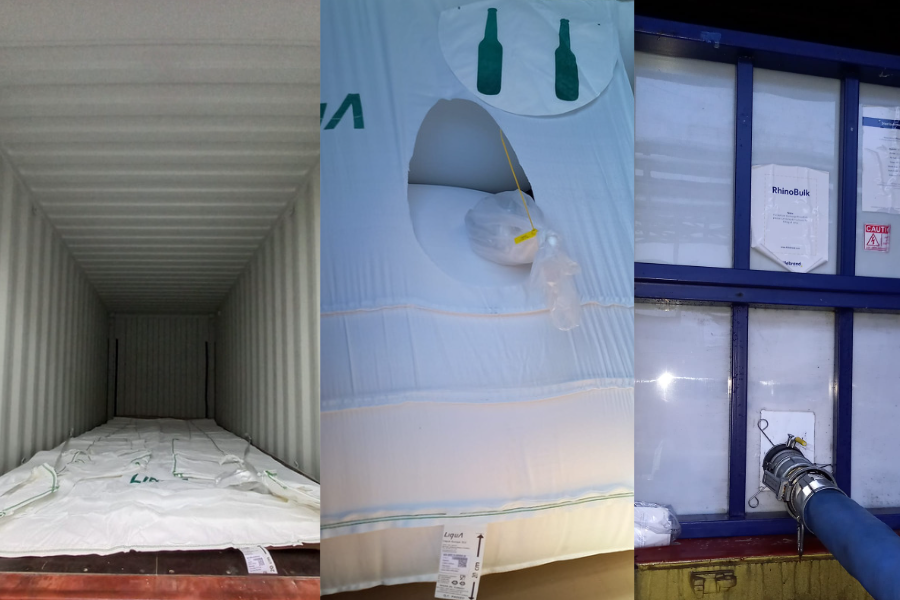
LIQUID BULK: FLEXITANK
A flexitank is a bladder that is designed to fit inside a 20ft general container or truck and which converts that freight container/ truck into a non-hazardous bulk liquid transportation unit.
Bulk liquid shipment is an important branch of transport industry. ISO tank and drum have been the traditional shipments means. However, it has been not only a high cost for company to purchase, to recycle, to maintain, to clean etc, but also has a unfavorable impact on national resource utilization and environmental protection. Thus, an economical, environment-protections shipment means for bulk liquid is born and become a favorite in shipping bulk liquid in the world. For the shipment of non hazardous liquid, flexi-tank has unique advantage in freight and performance, compared with traditional shipment means.
It allows transport between 1,000 and 24,000 litres.
In Flexitank it is possible to transport almost any non-hazardous liquids, both for industrial use and food application, such as: white oils, palm oil, ricin oleic acid, transformer oils, edible oils, lactic acid, vegetable oils, additives, drinking water, waxes, aluminum chlorhydroxide, fruit concentrates, detergents, sweeteners, emulsions, malt extract, glycerol, natural latex, synthetic latex, lubricants, musts, paraffin, polyols, non-hazardous chemicals, sorbitol, printing ink, wine, pharmaceutical, cleaning liquid, emulsions, glycerin, ink, fertilizers, latex, etc.
Flexitank advantages:
In the non-hazardous markets, flexitanks are considered in some quarters to be effective substitutes for tank-containers, railway or road tanks, drums, IBCs and other types of packaging.
Reasons put forward to justify single-use flexitanks include:
- Product dedicated and therefore no risk of cross contamination;
- Relatively low positioning costs (in some areas 100 empty flexitanks can be positioned for the same cost as one tank container);
- Positioning a flexitank with a capacity of up to 24,000 liters inside a 20ft general freight container enables shippers to dispatch about 40% more cargo per container than a drummed consignment, about 50% more than a bottled consignment and about 15% additional payload when compared to a container filled with intermediate bulk containers (IBCs);
- Saving up to 90% of time for stuffing/ unstuffing of the cargo;
- No need to clean flexitank after transportation as it is disposable;
- The cargo is delivered “door to door” without intermediate overloads;
- No return loads are required;
- Loading rates are higher compared to drums and IBCs.

